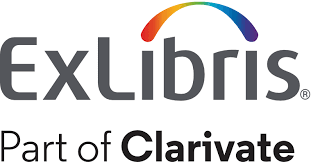Un análisis del autismo desde la perspectiva de su influencia en familias y la tecnología como facilitador en el manejo de esta condición
DOI:
https://doi.org/10.22335/rlct.v8i1.301Palabras clave:
aprendizaje, autismo, cuidado, familia, necesidades, tecnologíaResumen
El presente artículo contiene un análisis detallado de las particularidades del desarrollo que se generan en las personas con Trastorno del Espectro Autista (TEA). Se comienza por una profunda investigación de los síntomas comunes, tomando referentes históricos para entender el desarrollo de este trastorno en niños, teniendo en cuenta características de quienes la presentan y la manifestación en su comportamiento. A manera de reflexión, es necesario realizar el análisis de la influencia que tiene esta condición sobre el comportamiento de los padres y cómo se ha manejado desde diferentes perspectivas y alternativas que sumadas con el apoyo de la tecnología y de instituciones gubernamentales, puede llegar a verse como un caso controlado. Finalmente, se muestra como la tecnología ha contribuido a contrarrestar el síndrome que sufren los padres y familiares de los niños con TEA, siendo este el principal objeto de reflexión.
Descargas
Referencias
(s.f.). Obtenido de sitio Web de Centros para el Control y Prevención de Enfermedades: http://www.cdc.gov/ncbddd/Spanish/autism/index.html
(s.f.). Obtenido de sitio Web de NICHD: https://www.nichd.nih.gov/espanol/Pages/default.aspx
(s.f.). Obtenido de sitio Web de NINDS: http://www.ninds.nih.gov/health_and_medical/pubs/autismo.htm
(s.f.). Obtenido de sitio Web de Autism society: http://www.autism-society.org/
(s.f.). Recuperado el 16 de Noviembre de 2015, de Consejos tecnológicos: actividades para niños con autismo. : http://es.verizonwireless.com/vida-movil/hogar-y-familia/apps-actividades-para-ninos-con-autismo/
Ángeles, M. a., Martín, M., Cruz, M. a., & & León, B. (2008). Acercamiento a la realidad de las familias de personas con autismo.
Autismo: lo que cambia con lo digital. (Octubre de 2014). Obtenido de sitio Web Conferencia ITASD Paris: http://www.itasd.org/
Autismo: lo que cambia con lo digital. (Octubre de 2014). Obtenido de sitio Web Conferencia ITASD Paris: http://www.itasd.org/
Bharatharaj, J., & Kumar, S. S. (2013). Considerations in Autism therapy using robotics. Fourth International Conference on Computing, Communications and Networking Technologies (ICCCNT, 4-8.
Cai, Y., Chia, N. K., Thalmann, D., Kee, N. K., Zheng, J., & Thalmann, N. M. (2013). Design and Development of a Virtual Dolphinarium for Children With Autism. IEEE Transactions on Neural Systems and Rehabilitation Engineering, 208-217.
Cheng, Y., Moore, D., McGrath, P., & Fan, Y. (2005). Collaborative virtual environment technology for people with autism. Fifth IEEE International Conference on Advanced Learning Technologies, 247-248.
Conn, K., Liu, C., Sarkar, N., Stone, W., & Warren4, Z. (2008). Affect-sensitive assistive intervention technologies for children with autism: An individual-specific approach. The 17th IEEE International Symposium on Robot and Human Interactive Communicatio, 442-447.
Diario, A. (8 de Junio de 2013). Noticias. Obtenido de Legislación supranacional sobre los derechos universales de las personas con autismo: http://autismodiario.org/2013/06/08/legislacion-supranacional-sobre-los-derechos-universales-de-las-personas-con-autismo/
Dickstein-Fischer, L., & Fischer, G. S. (2014). Combining psychological and engineering approaches to utilizing social robots with children with Autism. 36th Annual International Conference of the IEEE Engineering in Medicine and Biology Society (EMBC), 792-795.
Especiales CDC: Enfermedades y afecciones: 10 cosas que hay que saber sobre los nuevos datos del autismo. (31 de Marzo de 2014). Obtenido de sitio Web CDC: http://www.cdc.gov/spanish/especialesCDC/AutismoDatos/
Finkelstein, S. L., Nickel, A., Barnes, T., & Suma, E. A. (2010). Astrojumper: Designing a virtual reality exergame to motivate children with autism to exercise. Virtual Reality Conference (VR), 267-268.
Goularty, C. M., Castillo, J., Valadao, C. T., Caldeira, E., & Bastos-Filho, T. F. (2014). Mobile robotics: A tool for interaction with children with autism. IEEE 23rd International Symposium onIndustrial Electronics (ISIE, 1555-1559.
Grynszpan, O., Nadel, J., Carbonell, N., Simonin, J., Constant, J., Barillier, F. L., . . . Courgeon, M. (2009). A new virtual environment paradigm for high functioning autism intended to help attentional disengagement in a social context. Virtual Rehabilitation International Conference, 51-58.
Guxin, L., & Qiufang, L. (2013). Construction of website-based platform on development assessment of children with autism. 3rd International Conference on Consumer Electronics, 199-202.
Informacón general sobre autismo. (22 de Diciembre de 2015). Obtenido de sitio Web Autism Society: http://www.autism-society.org/en-espanol/
Judy, M. V., U.Krishnakumar, & Narayanan, A. H. (2012). Constructing a personalized e-learning system for students with autism based on soft semantic web technologies. IEEE International Conference on Technology Enhanced Education.
Karla Conn1, C. L., Sarkar, N., Stone, W., & Warren, Z. (2008). Affect-sensitive assistive intervention technologies for children with autism: An individual-specific approach. The 17th IEEE International Symposium on Robot and Human Interactive Communication, 442-447.
Kim, M.-G., Oosterling, I., Lourens, T., Staal, W., Buitelaar, J., Glennon, J., . . . Barakova, E. (2014). Designing robot-assisted Pivotal Response Training in game activity for children with autism. IEEE International Conference on Systems, Man and Cybernetics (SMC), 1101-1106.
Londoño, L., & Rojas, M. (2015). Implementación de una herramienta virtual para la determinación de la confianza. Revista Logos Ciencia & Tecnologia , 177-187.
M.E.R. (26 de Diciembre de 2013). Michael Rutter. Obtenido de Mi Espacio Resiliente: https://miespacioresiliente.wordpress.com/2013/12/26/michael-rutter/
Mani, G., Berkovich, S., & Liao, D. (2014). Adaptive and Interactive Design Based on Big Data Computational Model for Treating Autism. Computing for Geospatial Research and Application (COM.Geo), 121-122.
Morales, Z. (28 de Abril de 2015). Origen del Autismo. Obtenido de New Learning Day: http://www.newlearningdaypr.com/2015/04/28/origen-del-autismo/
Nguyen, T., Phung, D., & Venkatesh, S. (s.f.). Analysis of psycholinguistic processes and topics in online autism communities.
Noriega, G. (2015). A Neural Model to Study Sensory Abnormalities and Multisensory Effects in Autism. IEEE Transactions on Neural Systems and Rehabilitation Engineering, 199 - 209Objetivos: LICA. (s.f.). Obtenido de Liga Colombiana de Autismo: http://www.ligautismo.org/organizacion/objetivos.html
Ortega, M. V., Martínez-Lozano, J. J., & Ibargüen-Mondragón, E. (2016). Modelos estimados de análisis de supervivencia para el tiempo de permanencia de los estudiantes de la Universidad Francisco de Paula Santander. Respuestas, 21(2), 24-36.
Pacheco, K., Fonseca, F., Hernánde, Y. C., Rodríguez, D., Posada, J., & Villanueva, J. A. (2013). Robotic prototype for children with low functioning autism. Pan American Health Care Exchanges (PAHCE).pingüino de Intervencion de Comportamiento para el Autismo. (s.f.).
Pioggia, G., Igliozzi, R., Ferro, M., Ahluwalia, A., Muratori, F., & Rossi, D. D. (2005). An android for enhancing social skills and emotion recognition in people with autism. IEEE Transactions on Neural Systems and Rehabilitation Engineering, 507-515.
Quienes somos: Secretaría de la Convención sobre los derechos de las personas con discapacidad. (s.f.). Obtenido de Naciones unidas: http://www.un.org/spanish/disabilities/default.asp?id=495
Rasche, N., & Qian, C. Z. (2012). Work in progress: Application design on touch screen mobile computers (TSMC) to improve autism instruction. Frontiers in Education Conference (FIE), 1-2.
Reynolds, T. (13 de Abril de 2009). Investigación del Autismo: Hay esperanza para nosotros todavía, ¿eh? Obtenido de sitio Web de Lifetips: http://autism.lifetips.com/es/cat/63506/autism-research/index.html
Ribeiro, P. (2014). ComFiM : A Game for Multitouch Devices to Encourage Communication between People with Autism.
Rivière, A. (Septiembre de 1997). Definición, etiología, educación, familia, papel psicopedagógico en el autismo. Obtenido de Universidad Autónoma de Madrid: https://www.uam.es/personal_pdi/psicologia/agonzale/Asun/2006/TrastDsllo/Lecturas/Autismo/RivDslloNorAut1.htm
Robins, B., Dautenhahn, K., & Dickerson, P. (2009). From Isolation to Communication: A Case Study Evaluation of Robot Assisted Play for Children with Autism with a Minimally Expressive Humanoid Robot. Second International Conferences on Advances in Computer-Human Interactions, 205-211.
Saldaña, D., Álvarez, R., Aguilera, A., Moreno, J., Moreno, M., & De los Reyes, I. (2008). ¿Cómo contribuyen las asociaciones de familiares a la educación del alumnado con autismo? Sevilla.
Sarachan, J. (2012). Virtual floortime using games to engage children with Autism Spectrum Disorder. IEEE International Games Innovation Conference (IGIC), 0-3.
Shamsuddin, S., Yussof, H., Hanapiah, F. A., & Mohamed, S. (2013). A Qualitative method to analyze response in robotic intervention for children with autism. IEEE RO-MAN, 324-325.
Shamsuddin, S., Yussof, H., Hanapiah, F. A., & Mohamed, S. (2014). Response of Children with Autism to Robotic Intervention and Association with IQ Levels. IEEE International Conferences on Development and Learning, 387-393.
Sheikhani, A., Hami, B., Mohammadi, M. R., Noroozian, M., & Golabi, P. (2007). Analysis of quantitative Electroencephalogram background activity in Autism disease patients with Lempel-Ziv complexity and Short Time Fourier Transform measure. UK: ieeexplore.
Shic, F. (2007). Maesuring context: The gaze patetrns of children with autism evaluated from the bottom-up.
Sitdhisanguan, K., Chotikakamthorn, N., Dechaboon, A., & Out, P. (2008). Evaluation the Efficacy of Computer - Based Training Using Tangible User Interface for Low-Function Children with Autism. Second IEEE International Conference on Digital Game and Intelligent Toys Based Education, 70-74.
Stanton, C. M., Kahn Jr, P. H., Severson, R. L., Ruckert, J. H., & Gill, B. T. (2008). Robotic animals might aid in the social development of children with autism. Proceedings of the 3rd ACM/IEEE International Conference on Human Robot Interaction, 271-278.
Sudirman, R., & Hussin, S. S. (2014). Sensory responses of autism via electroencephalography for Sensory Profile. Malaysia: ieeexplore.
Sunsirikul, S., & Achalakul, T. (2010). Associative Classification Mining in the Behavior Study of Autism Spectrum Disorder. Thailand: ieeexplore.
Taheri, A., Alemi, M., Meghdar, A., PourEtemad, H., & Basiri, N. M. (2014). Social robots as assistants for autism therapy in Iran: Research in progress. Second RSI/ISM International Conference on Robotics and Mechatronics (ICRoM, 760-766.
Tang, H.-H., Jheng, C.-M., Chie, M.-E., Lin, N.-M., & Chen, M. Y. (2013). iCAN: A tablet-based pedagogical system for improving the user experience of children with autism in the learning process. International Conference on Orange Technologies (ICOT), 177-180.
Tortosa, F. (2004). Tecnologías de ayudo en personas con Transtornos del Espectro Autista: Guia para docentes. Obtenido de http://diversidad.murciaeduca.es/tecnoneet/docs/autismo.pdf
Veeraraghavan, S., & Srinivasan, K. (2007). Exploration of Autism using Expert Systems. India: IEEE.
Vergel-Ortega, M., Martínez Lozano, J. & Zafra Tristancho, S. (2016). Factores asociados al rendimiento académico en adultos. Revista CientíFica, 2(25). doi:http://dx.doi.org/10.14483//udistrital.jour.RC.2016.25.a4
Vergel Ortega, M. Ortega, S. (2015). Caracterización de la Juventud en Situación de discapacidad que cursa programas académicos en Instituciones de Educación Superior en la ciudad de Cúcuta. Educación Internacional, Lengua Y Cultura. En: Colombia ISBN: 978-958-58969-6-3. Cali: SELLO Editorial Editorial REDIPE (95857440) Red de Pedagogía S.A.S. , 1. 54 - 65
Viapiano, R. (13 de Enero de 2015). La necesidad de apoyo emocial en padres y familiares de personas con autismo. Obtenido de Autismoo diario: http://autismodiario.org/2015/01/13/la-necesidad-de-apoyo-emocional-en-padres-y-familiares-de-personas-con-autismo/
Wainer, J., Robins, B., Amirabdollahian, F., & Dautenhahn, K. (2014). Using the Humanoid Robot KASPAR to Autonomously Play Triadic Games and Facilitate Collaborative Play Among Children With Autism. IEEE Transactions on Autonomous Mental Development, 183-199.
Xiao-mian, S., Jing, Y., Minb, L., Hui-xingb, D., & Chongxuna, Z. (2005). Study of 99mTc-TRODAT-1 imaging on human brain with children autism by single photon emission computed tomography. Shanghai: ieeexplore.
Publicado
Número
Sección
Licencia
Esta revista provee acceso libre e inmediato a su contenido (https://creativecommons.org/licenses/by-nc-nd/4.0/), bajo el principio de hacer disponible gratuitamente la investigación al público y apoyar a un mayor intercambio de conocimiento global.
































